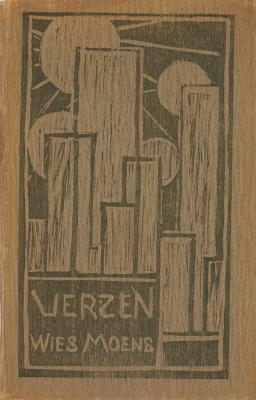Karel Maes is one of the few Belgian expressive artists at the beginning of the 1920’s who found a connection with the Netherlandish movement De Stijl. However less prominent than his colleagues Georges Vantongerloo and Huib Hoste, Maes gains recognition from the great frontman Theo Van Doesburg (1883 - 1931). For a while, Maes is even the Belgian ‘representative’ of Van Doesburg’s international movement. The highpoint is in 1922 with the signing of the manifesto of the Konstruktivistische Internationale Beeldende Arbeidsgemeenschap in Weimar. He does this in the presence of Van Doesburg, El Lissitzky (1890 - 1941), Max Burchartz (1887 - 1961) and Hans Richter (1888 - 1976). The artist is present at nearly all major avant-garde exhibitions where the Pure Plasticism is active (Antwerp, Bruges, Geneva, Brussels, Monza, etc.).
Karel Maes, trained as an educator, chooses for an artistic career at a very young age. After he briefly tests the boundaries of various painting styles (Impressionism, Cubism and Fauvism), Maes turns his back on the figurative beginning in 1920. Along with Jozef Peeters and others, he then makes up a part of the first Belgian generation of geometric, abstract painters. His works are characterised by a flat layering of rectangles, circles and triangles.
The oeuvre of the young Karel Maes (circa 1918 - 1925) is the result of a multifarious, technical development. His oeuvre consists of paintings, drawings, posters, linocuts, woodcuts and theatre decors. He designs illustrations for numerous Belgian avant-garde publications such as Lumière, Ruimte, Ça Ira, Het Overzicht, De Driehoek and 7 Arts. In 1924 he collaborates with his brother Jef on the realisation of a furniture series for the garden district of Cité Moderne in Sint-Agatha-Berchem. Maes has a desire to take on the applied arts and combines his plastic and graphic work with the rendering of furniture, tapestries and glass windows. After his marriage in 1926, thanks to his father-in-law Herman Teirlinck, he becomes Director at the Brussels’s furniture company Atelier Victor De Cunsel. Towards the end of the 1920’s, Maes becomes more and more isolated from the art world. This, and his prejudice for cultural collaboration after WWII, explains why his oeuvre is never really known. Yet, the artist pushes his multi-sided work further, whereby he is inspired by the prevailing Surrealist and Expressionist tendencies at the time, though likewise never completely abandons the abstract. With his return from the Belgian Congo (end of the 1960’s), Maes takes up the geometric compositions again from the early years and also makes new lyrical-abstract work. At the end of his life, Maes is inclined more towards traditional work.
A reconstruction of Maes’s development is a difficult task. There are many hiatuses and open questions. Twice, large portions of his work were destroyed and he often neglected to date his work. Nevertheless, Karel Maes is one of the major representatives of the ‘cold’ abstract in Belgium.
1900-1915
Karel Maes is born on 25 December 1900 in Mol. He is the son of an antiquarian, restorer and woodcutter Hendrik Maes and Maria Baten. In 1910 Hendrik Maes travels with his family to Brussels and establishes himself at Ruisbroekstraat 74. In 1913 Karel Maes follows lessons for one year at the Brussels Academy. He befriends Pierre-Louis Flouquet, René Magritte and Victor Servranckx.
Beginning in 1915, Maes follows lessons at the Karel Buls Normaalschool in Brussels. Herman Teirlinck (1879 - 1967) is one of his teachers and E.L.T. Mesens (1903 - 1971) is one of his classmates.
1919
He works at the Centre d’Art in Brussels, along with Maurice Casteels (1890 - 1962) and Pierre-Louis Flouquet, among others.
1920
Maes works as an educator in Sint-Jans-Molenbeek and as drawing instructor in Bruges.
He is present at the lecture of Theo Van Doesburg, organised by the publication Le Geste in the Centre d’Art. In October 1920, he participates in the exhibition of the First Congress of Modern Art in Antwerp, where he meets Jozef Peeters for the first time.
Takes part in the Exposition internationale d’art moderne in Geneva.
1921
Karel Maes regularly produces linocuts for modernist publications such as Lumière, Ruimte, Ça Ira, Het Overzicht, De Driehoek and 7 Arts.
In March, along with Magritte and Mesens, Maes meets Theo Van Doesburg in Brussels during his travels through Europe. He meets with Van Doesburg again after his lecture on 30 November 1921 in Brussels. Maes receives and declines a proposal from the Parisian gallery L’Effort Moderne by Léonce Rosenberg. He was nominated by Van Doesburg.
1922
Participates in the exhibition of the Second Congress of Modern Art in Antwerp.
He gives a lecture during the Third Congress of Modern Art in Bruges. The lecture, entitled De kunstenaar beeldt niet uit, maar beeldt is Maes’s vision of the two thousand years of the history of art. Fernant Berckelaers, later known as Michel Seuphor, writes a review on this speech in Het Overzicht. Maes is co-founder of 7 Arts, for which he writes many reviews on expressive art.
Karel Maes corresponds with Van Doesburg about the representation of De Stijl in Belgium. He signs the manifesto of the Konstruktivistische Internationale Beeldende Arbeidsgemeenschap (K.I.) in Weimar on 25 September 1922.
1923
Participates with the booth of 7 Arts/L’Equerre during the exhibition Les arts belges d’esprit nouveau in Brussels. Here, among others, he shows his poster De vertraagde film, made for a theatre piece by Herman Teirlinck.
The publication Mecano criticises Maes because of his artistic and Flemish-leaning theories in the article Waar de maes K en Scheldwoorden vloeien. The article is apparently written by Mesens, who for some time lived discontentedly with Maes.
1924
He designs, along with his brother Jef, furniture for the Cité Moderne in Sint-Agatha-Berchem. The Cité Moderne is a design by the architect Victor Bourgeois.
1925
Formation of the group L’Assaut along with Jean-Jaques Gailliard (1890 - 1976), Felix De Boeck and Pierre-Louis Flouquet, among others.
Participates in the Exposition Internationale des Arts Décoratifs et Industriels Modernes in Paris and at the Exposition Internationale des Arts Décoratifs Modernes in Monza, Italy.
1926
Marries Stella, daughter of Herman Teirlinck in Sint-Jans-Molenbeek on 4 August 1926. He takes on a management position within the furniture company Atelier Victor De Cunsel in Brussels.
1927 - 1930
Takes part in the exhibition by the group L’Assaut in Brussels and in Overveen in the Netherlands.
Builds a house in Dilbeek according to his own design. Works along with architect Victor Bourgeois on the double villa in Sint-Idesbald, intended for the Maes family and the Teirlinck family. He establishes himself as an independent furniture maker in Brussels.
Births of his sons Jan (1928) and Piet (1930).
1944 - 1949
Is imprisoned due to political collaboration. He was a member of DeVlag, an organisation that fought during the Second World War for the assimilation of Flanders into Hitler’s German Reich. In 1947, he is given an 8-year prison sentence. In 1949 he is conditionally released.
1950 - 1967
Maes departs for Leopoldstad (Congo), where he establishes Menuiserie-Ebénisterie Maes et Fils. He and his son Piet decline a contract from the furniture company Knoll.
In 1963 Stella Teirlinck dies in Leopoldstad.
In 1966, he is detained and his work is seized by the Congolese authorities. Maes returns definitively to Belgium and settles in Assent, and later in Koersel, with the family of his son Piet.
Takes up old compositions again from the 1920’s and paints lyrical-abstract works.
1974
Karel Maes dies in Brussels on 11 July 1974.
Sergio Servellón
CC-BY-NC (Creative Commons 4.0)
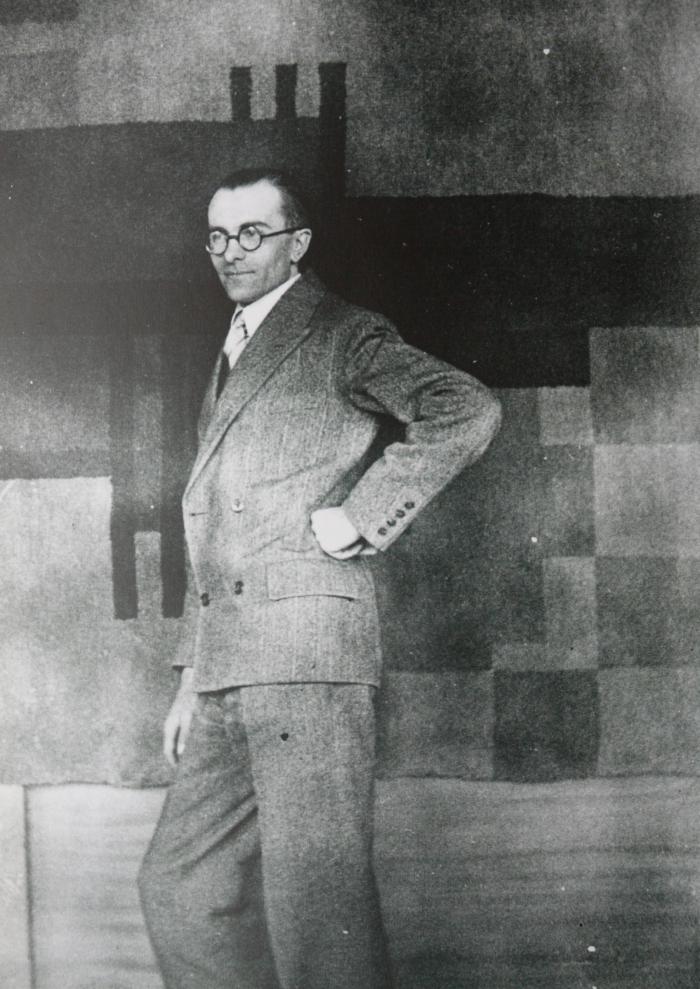
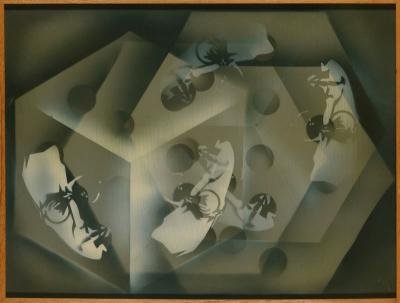
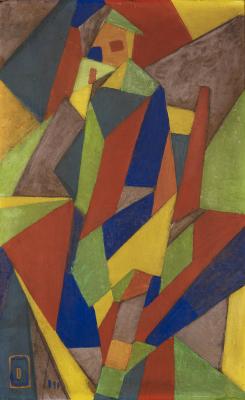

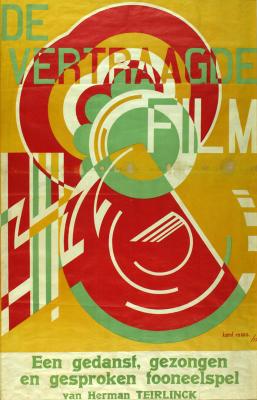
![[s.t.] [s.t.]](/sites/default/files/styles/flexible_style/public/ca-images/1483102347_ST_10031.jpg?itok=nh-0lQGS)
